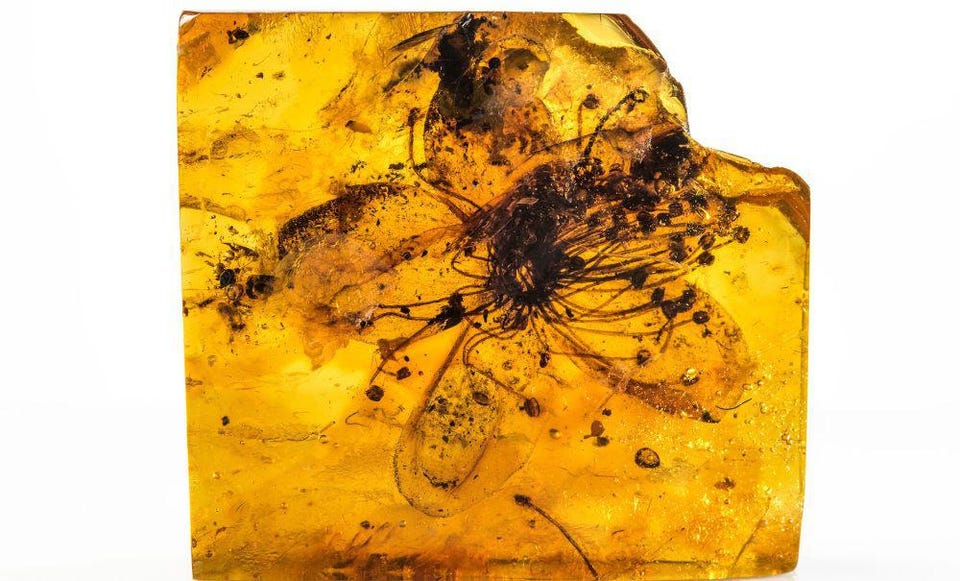Scientists Describe The Largest Fossil Flower Discovered So Far In Amber


Fossil flower of Symplocos kowalewskii (Symplocaceae) from Baltic amber – to date, by far the … [+] largest floral inclusion discovered from any amber.
Carola Radke/Museum für Naturkunde Berlin
With a diameter of 28 millimeters across, a fossil flower specimen is nearly three times the size of other fossil flowers preserved in amber.
The flower, encased in fossil tree resin found in the Baltic area of northern Europe, dates from 38 to 33.9 million years ago and is thought to be from an ancient flowering evergreen plant originally named Stewartia kowalewskii in 1872.
Eva-Maria Sadowski and Christa-Charlotte Hofmann reanalyzed the exceptionally well-preserved fossil. The authors extracted pollen from the sample and their analysis suggests that the flower is more closely related to the genus Symplocos – also called Sweetleaf, as the bark of some species is used to make soft drinks. This genus includes about 300 species of shrubs and trees with white or yellow flowers distributed in Asia and the Americas. Many modern species grow in humid tropical regions.
The authors propose a new name for the flower of Symplocos kowalewskii. S. kowalewskii likely grew in the shrubby undergrowth of the Baltic forest. Some 40 million years ago Earth’s climate was warmer and northern Europe was covered by a a tropical to temperate forest. The authors propose that the rare size of the flower is likely from a large resin outpouring which would have encased the flower. The properties of the resin would have helped to prevent organisms growing on the flower and causing damage, they add.
Flowering plants include more than 300,000 known species. The fossil record shows that they appear relatively suddenly all around the world in the mid-Cretaceous. Fossils covering the evolution of flowering plants in the past 70 million years are rare, as are well-preserved flowers. Only 1 to 3 percent of all organisms preserved in amber are of botanical origin. They are valuable for understanding the evolution of plant lineages, their palaeobiogeographic history and the amber source area, including habitats, plant diversity and the palaeoclimate.
The study “The largest amber-preserved flower revisited” is published in the journal Scientific Reports (2023). Material provided by Nature Publishing Group.
